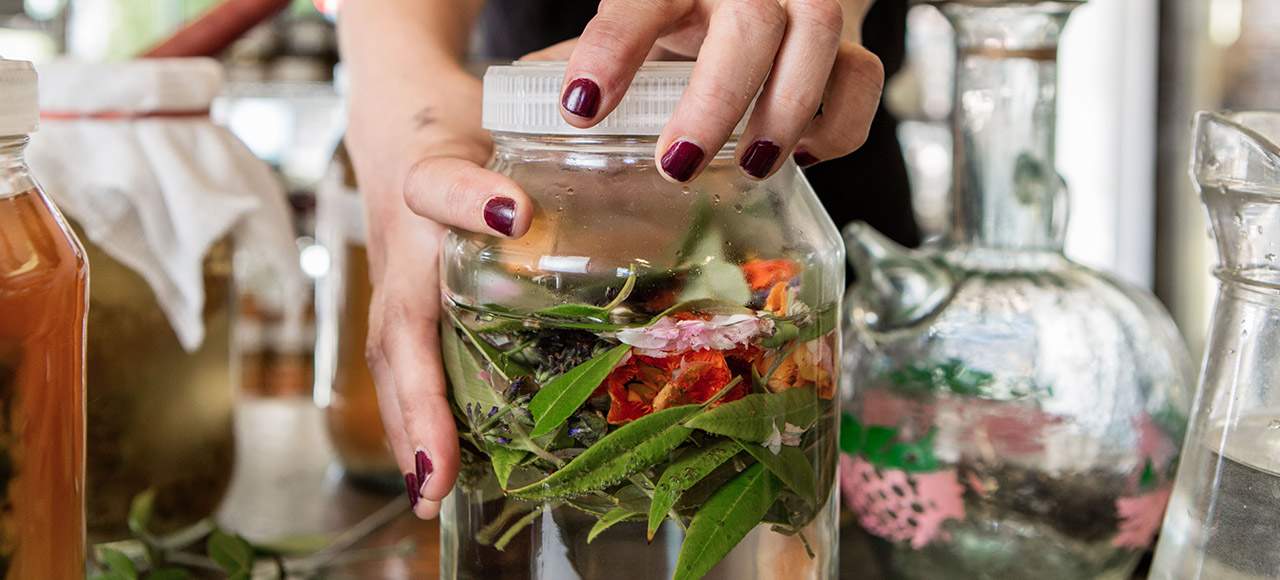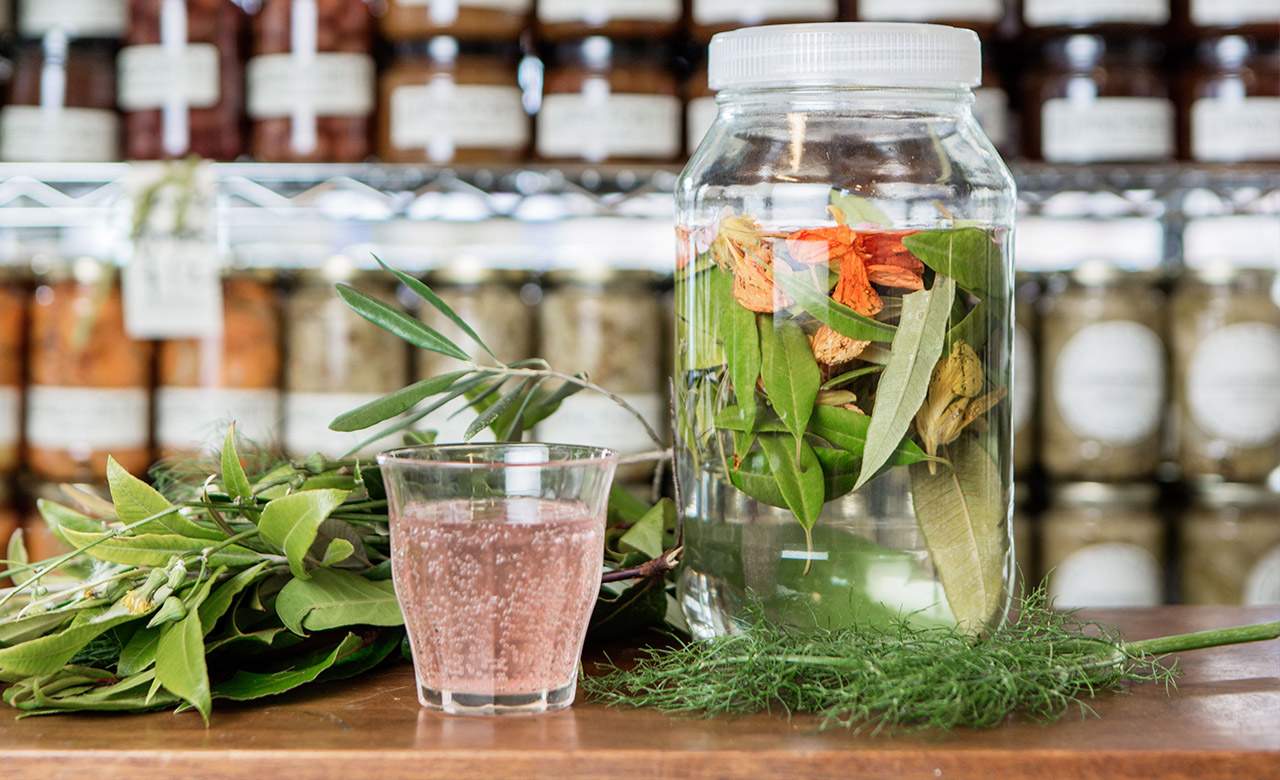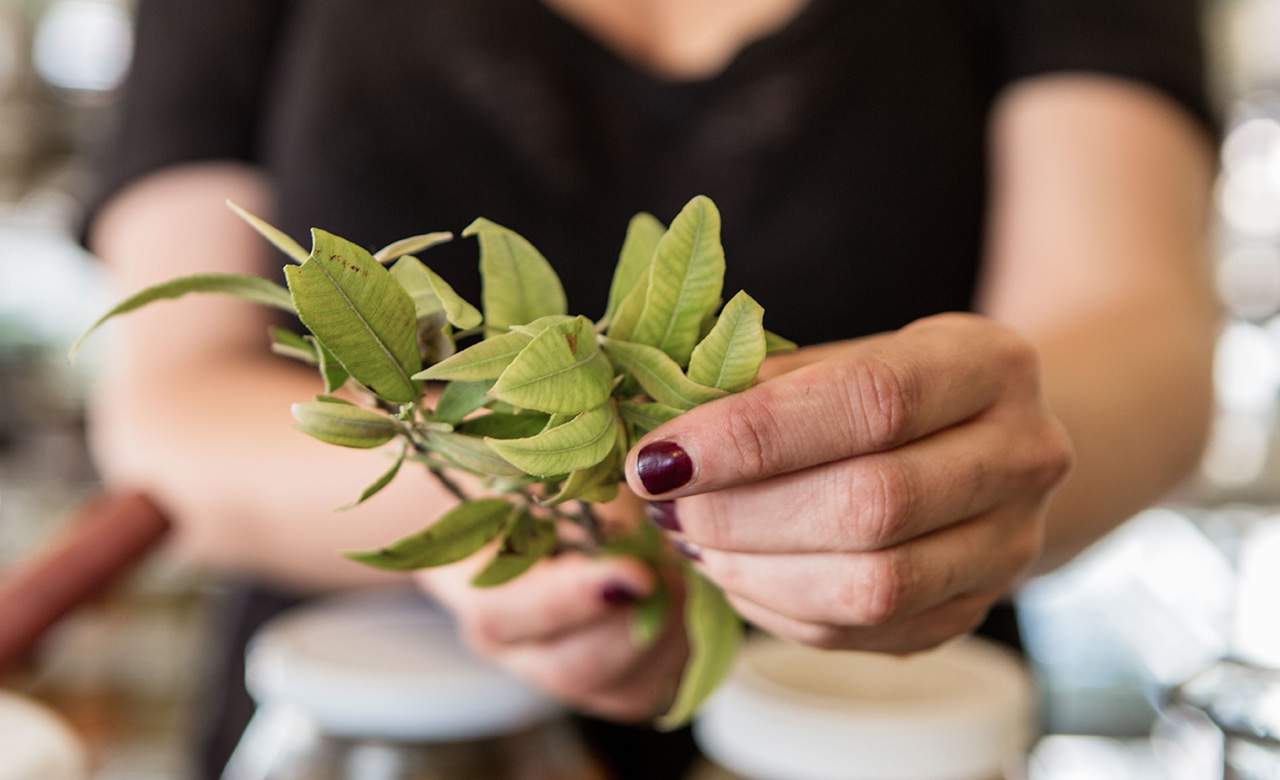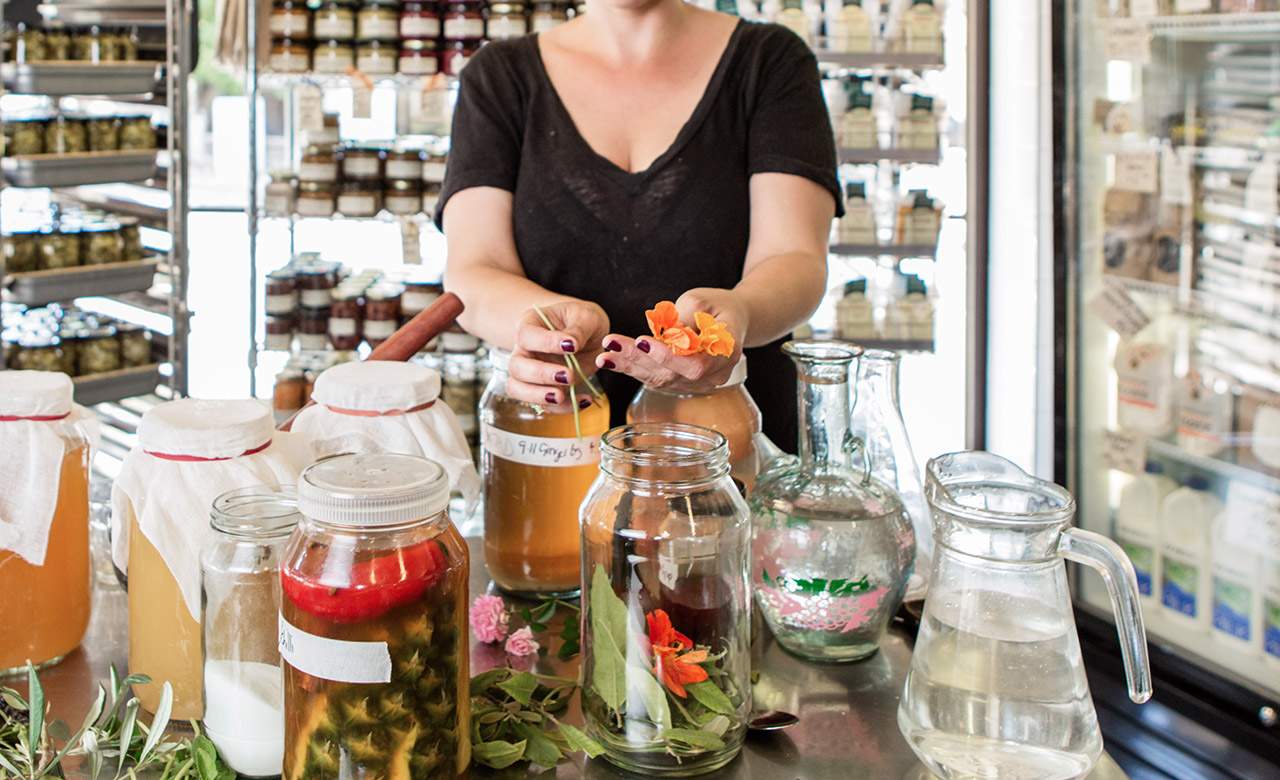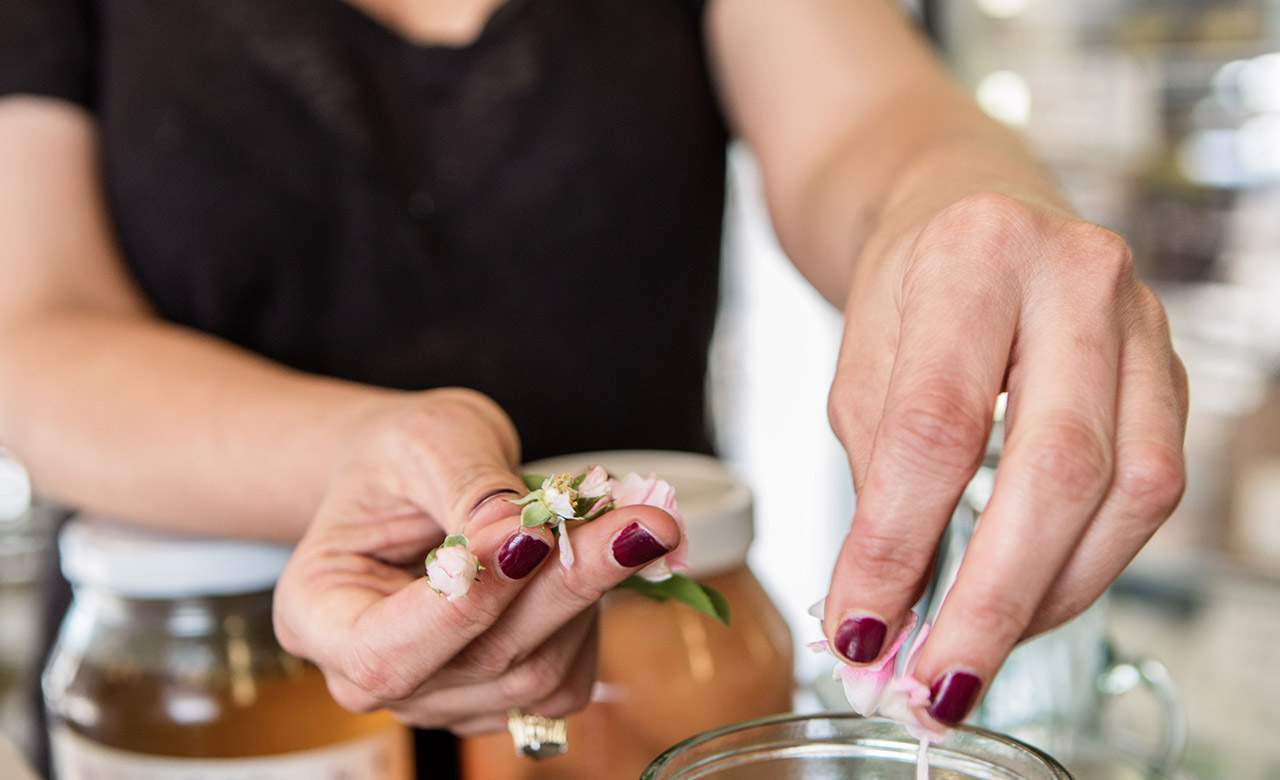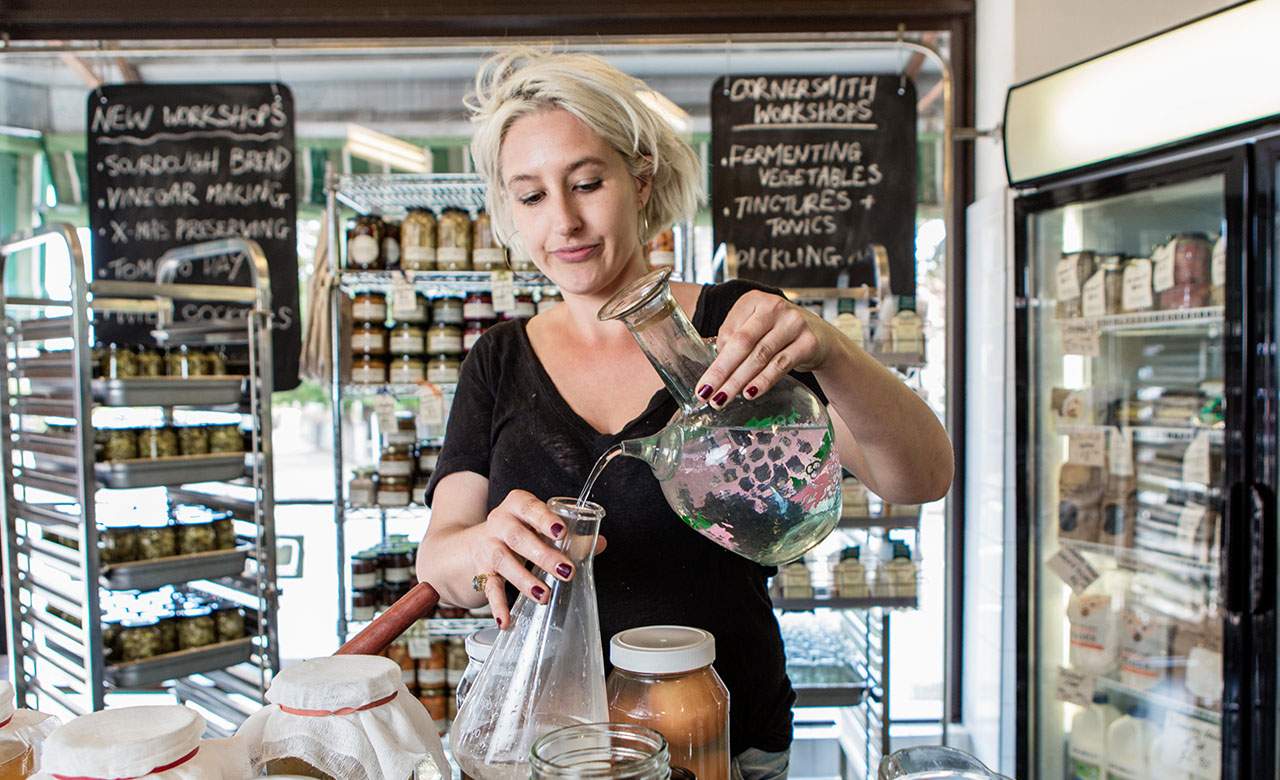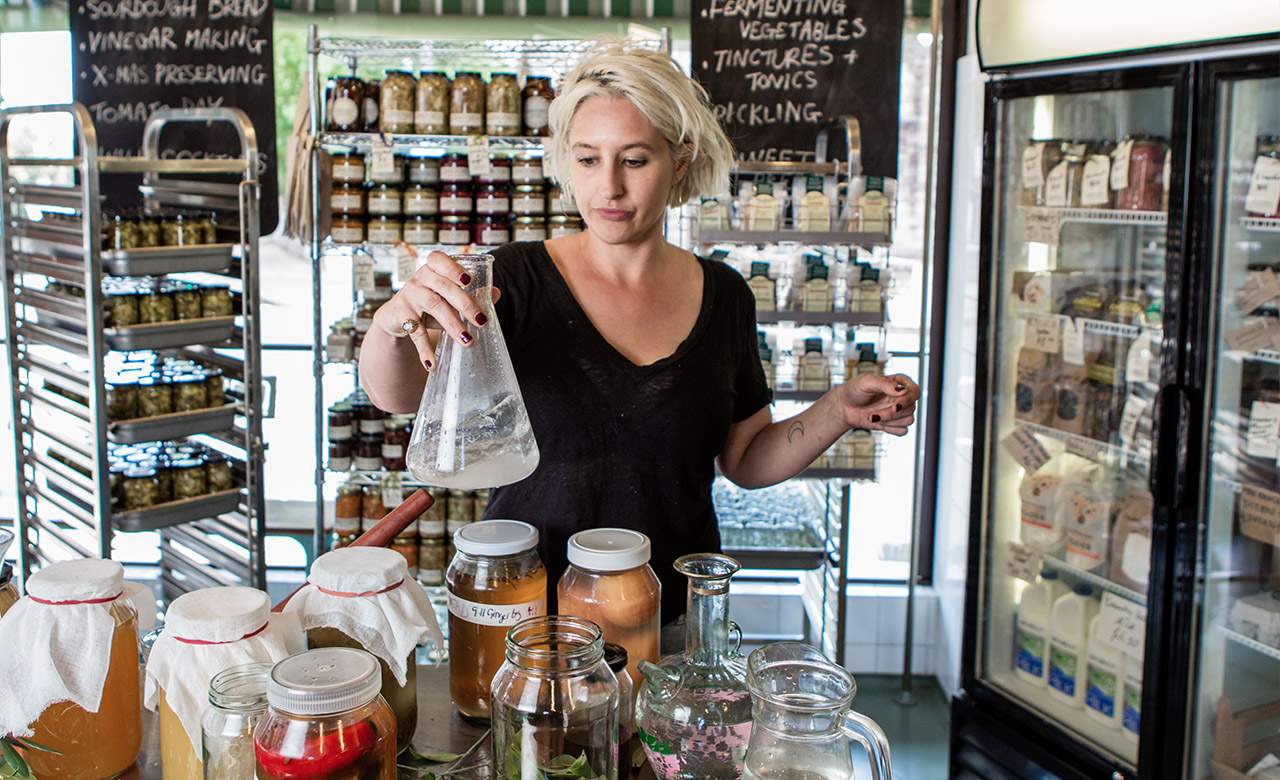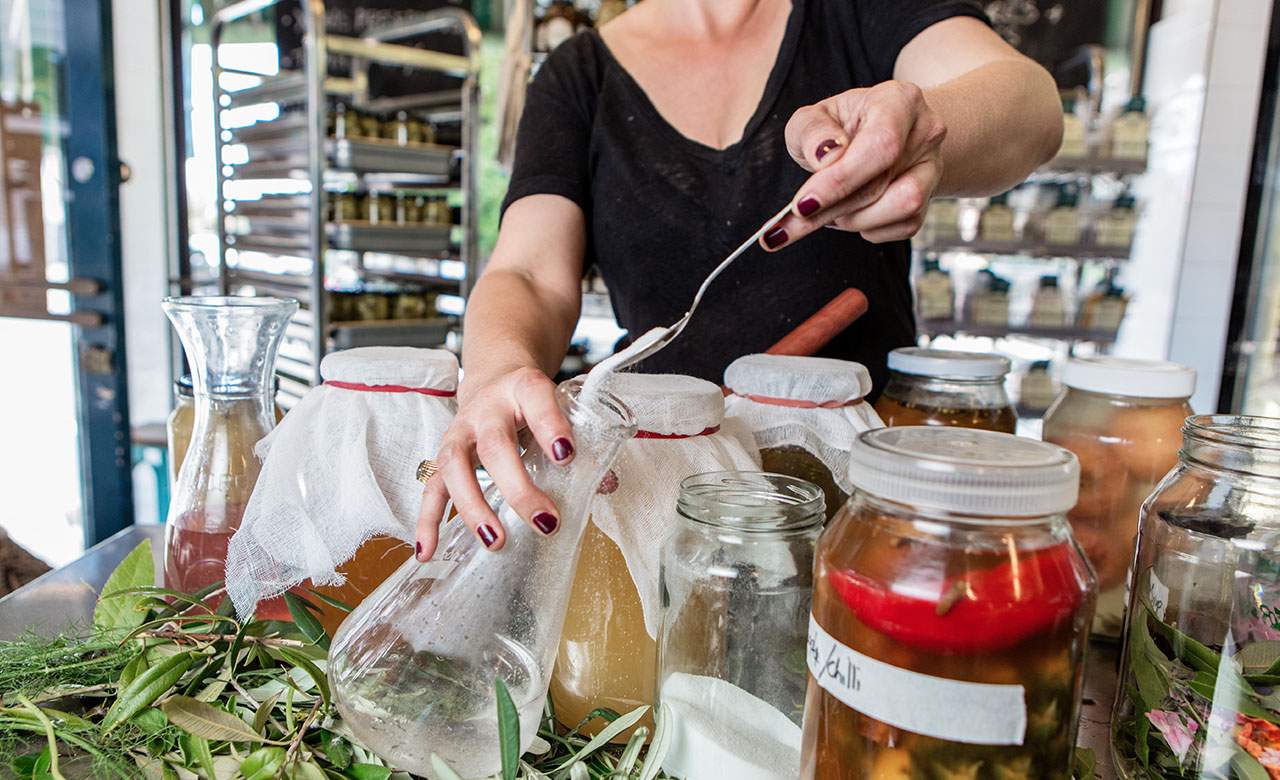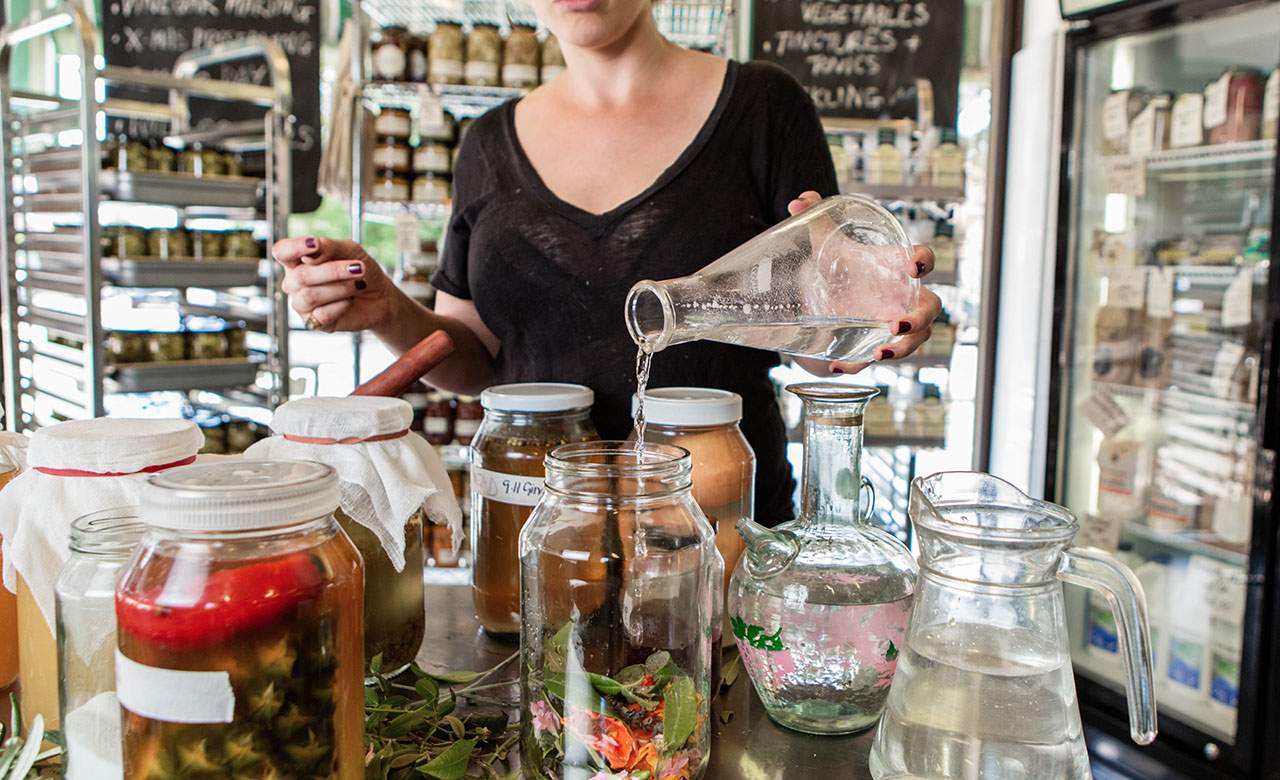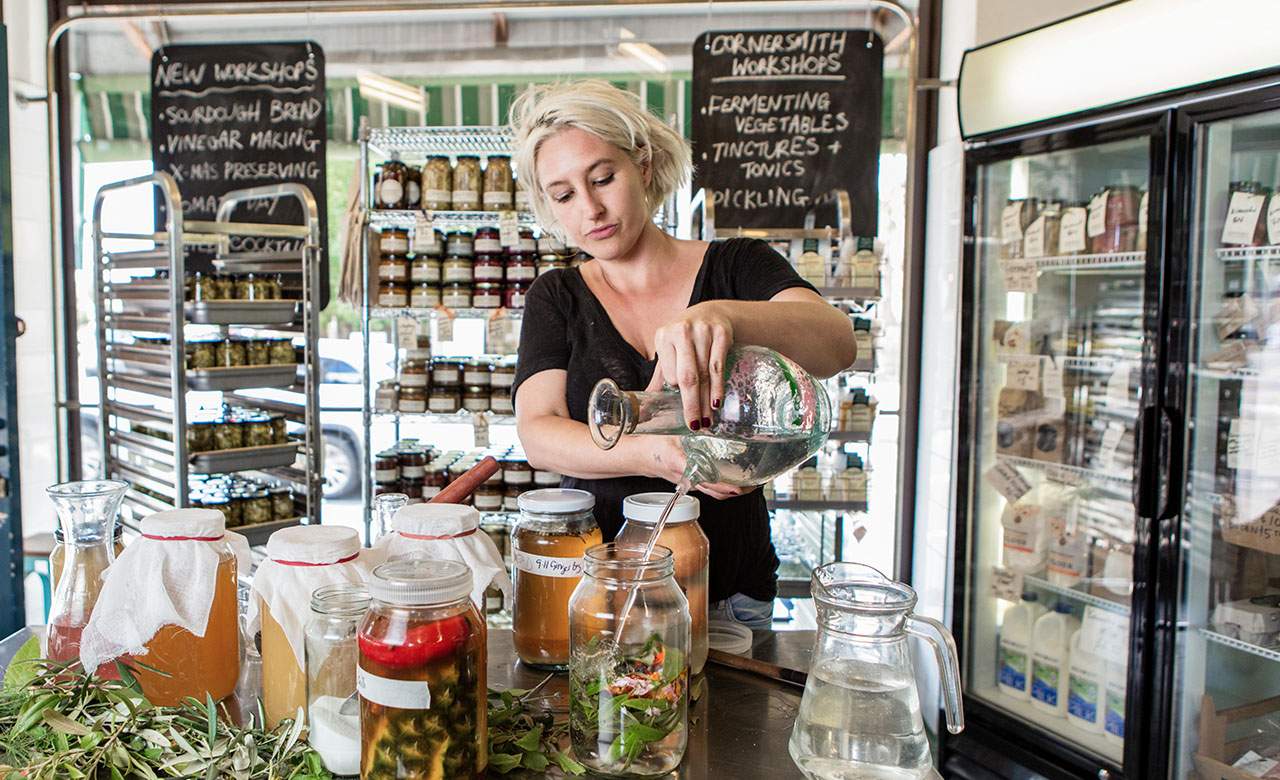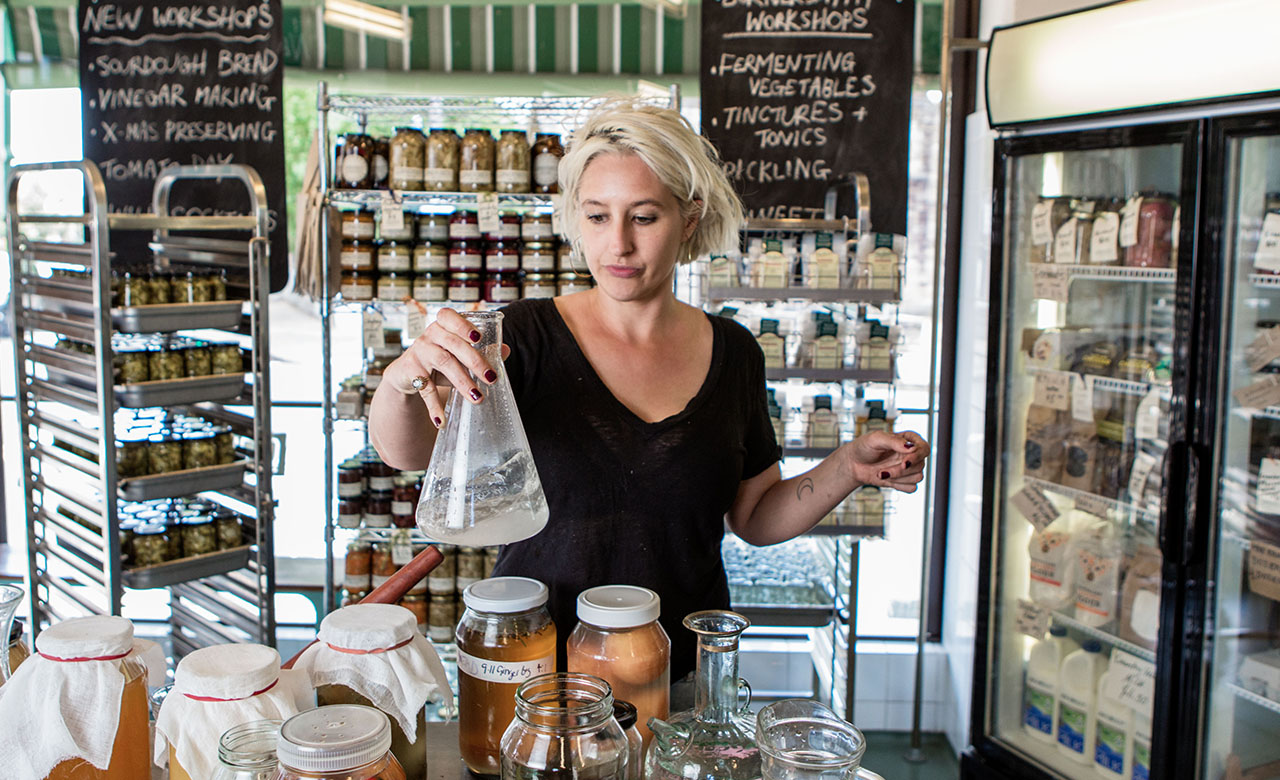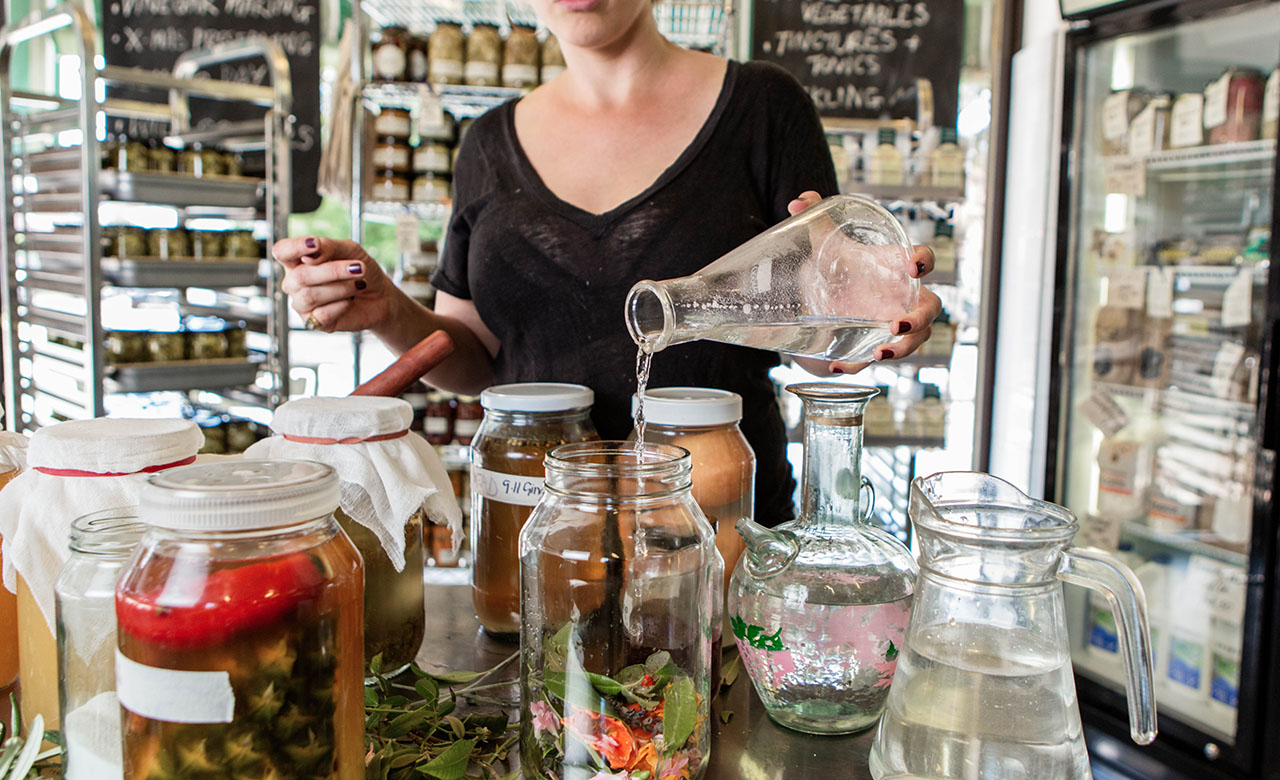How to Make Wild Soda with Cornersmith
Start gathering your leaves, bark and flowers.
In partnership with
If you hadn't noticed, fermentation is a bit of a thing. One of the driving forces behind the movement is the fact that fermented food and drinks can help promote good bacteria in your gut. So it's not surprising that one of the more popular workshops at Cornersmith — who dish out hearty breakfasts and hold workshops in cheesemaking, pickling and fermenting among others — is the wild soda class, where you learn to make a fermented, fizzy fruit beverage that's both delicious and good for your digestion.
That's the domain of Cornersmith's head fermenter Jaimee Edwards, a veteran in teaching lucky folks how to make wild soda, and then supervising as they make their own. For those who haven't attended one of her sessions — which have fittingly taken over nature-filled houses — go DIY and follow the instructions below.
WHAT ACTUALLY IS WILD SODA?
A wild soda is a fizzy fruit drink with a slightly sour, yeasty taste that's derived from the fermentation process involved in making it. The flavour is richer and more complex than any fizzy fruit drink you could pick up from a store because — like sour beer or wild fermentation wines — they're a product of nature. There are no artificial ingredients added. The fermentation process is unpredictable and gives each batch a unique flavour — even if you use the same ingredients and follow the same method each time. The process of making wild soda is similar to that of making wild fermentation wine. In winemaking, the yeast overpowers the lactic acid and turns the drink into alcohol, but in wild soda the lactic acid overpowers the yeast and creates carbonated water. Winemaking is best left to the professionals, but you can easily create wild soda on your own. Here's how.
GET OUT THERE AND FORAGE
To make wild soda, pick some of your favourite native plants, flowers and fruit. Edwards encourages you to get out there and forage. Supermarket fruit has likely gone through numerous cleaning processes, which means the natural microflora living on it (essential to the fermentation process) has likely been washed away. The more microflora, the easier the fermentation process — and the tastier the drink. "Foraging is pretty key," says Edwards. "That way you're not dealing with stuff that's gone through excessive washing."
She recommends foraging for clean leaves and bark for bacteria, and wild flowers and fruit (strawberries, lemons and blueberries) for flavour. Once you've foraged, break up your flowers, leaves and bark, pulp your fruit and place it all into a plastic bottle.
"Experiment with almost anything — that's part of the fun," says Edwards. "You're going to have some failures, and you're going to have successes. The ingredients you've added are obviously going to add a strong flavour, so you have to like them."
GET THE FERMENTATION GOING
When starting out, Edwards says it's a good idea to use plastic bottles. The natural carbonation that results from the fermentation process could cause glass jars to crack, and the last thing you want is a kitchen filled with half-finished strawberry and lemon verbena soda.
HOW DOES ALL THIS RELATE TO WINE?
Stoneleigh use a similar process of natural fermentation to make the wild fermentation wines in their Wild Valley range. Rather than adding a yeast known to produce a certain flavour, the yeasts and bacteria that naturally present on the grapes (aka microflora), are tasked with the fermentation. By letting nature do its thing (and because of the many different types of yeast getting involved), the wine ends up with a more complicated flavour profile. That means that just like wild soda, each vintage has its own unique flavour.
Follow Jamiee Edwards' adventures at @fermentingprojects.
Images: Steven Woodburn.
